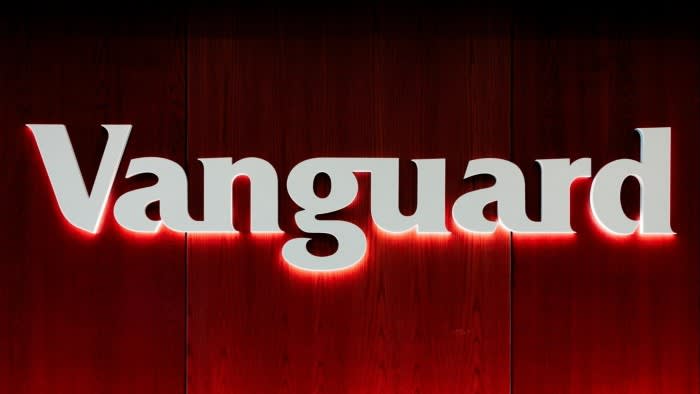Vanguard has deposed its rival BlackRock, the world’s largest asset manager, from its position as manager of the second-largest exchange traded fund in the world.
In a rare setback for the fund giant, BlackRock’s iShares Core S&P 500 ETF (IVV) has been overtaken by Vanguard’s equivalent S&P 500 ETF (VOO), which had assets of $540.76bn at Friday’s close, according to data from Morningstar, marginally ahead of IVV’s $540.66bn.
The reversal represents a marked change of fortunes for the two funds, given that VOO was $58bn behind IVV as recently as the start of 2022.
VOO is now just $50bn behind the SPDR S&P 500 ETF Trust (SPY), the first-ever US ETF and the world’s largest, a gulf some expect the Vanguard fund to eclipse in the near future considering that it was $182bn behind in January 2022.
“VOO launched a decade after IVV, so it has been playing catch-up since 2010. VOO has brought in more new money than IVV in most years since, including each of the past four,” said Bryan Armour, director of passive strategies research, North America at Morningstar.
“I expect VOO to catch SPY and become the largest ETF in the world in 2025, or 2026, at the latest,” he added. “VOO is set to smash the single-year inflows record, having already pulled in $85bn this year. In contrast, SPY has seen $5bn in outflows. The $125bn gap between the two ETFs [VOO and SPY] has shrunk to under $50bn in 2024. Were that pace to continue, VOO would easily be crowned king in 2025.”

The Vanguard and BlackRock funds both charge an annual fee of just 3 basis points and are largely aimed at retail investors and other buy-and-hold types. As a result, they have benefited from the ever-widening usage of ETFs, which recently passed $10tn in assets in the US, virtually double what they managed four years ago, according to ETFGI, a consultancy.
SPY, which charges 9bp, is instead used more as a trading instrument, given it tends to have the smallest bid-offer spreads and boasts a web of derivatives built on top of it.
State Street Global Advisors attempted to launch a fight back last year by slashing the fee on its buy-and-hold SPDR Portfolio S&P 500 ETF (SPLG) to just 2bp, but so far it has only amassed $49bn.
Given the fee differential, Nate Geraci, president of financial adviser The ETF Store, believed “it’s only a matter of time before both VOO and IVV track down SPY.
“While SPY is the undisputed liquidity king, it carries an expense ratio that is triple the amount of VOO and IVV. Investors continue to pour money into S&P 500 ETFs and they’re paying close attention to the price tags.”
VOO did briefly overhaul IVV for four days in September, but was unable to maintain its lead. This time around analysts are confident it will remain ahead, with Armour attributing VOO’s rise to differing investor perceptions of the world’s two largest asset managers.
“Vanguard is synonymous with index investing, though they offer more than passive funds,” he said. “BlackRock’s iShares has a similar reputation but also a sprawling fund line-up that is many things to many different people.
“Vanguard’s laser focus on cheap beta [market returns] is likely the reason investors look to VOO over IVV.”
Todd Rosenbluth, head of research at TMX VettaFi, believed rising retail interest in ETFs was aiding the Pennsylvania powerhouse more than its New York rival.
“Retail investor adoption of ETFs has swelled recently which has helped Vanguard gain market share,” he argued. “Though iShares has an industry leading presence, there are many investors that build portfolios using just Vanguard ETFs.”
Rosenbluth also pointed out that Vanguard has benefited from being, thus far, the only asset manager permitted by the US Securities and Exchange Commission to operate the “ETF-as-a-share class” model that it patented, even though that patent has now expired.
Under this structure, an ETF and a mutual fund can operate as separate classes of an overall fund and Vanguard “allows mutual fund share class owners to convert into VOO”, a trade incentivised by the mutual fund arm being slightly more expensive, at 4bp.
The broader Vanguard S&P 500 vehicle has $1.28tn of assets, according to Morningstar. It is the world’s second-largest investment fund, beaten only by Vanguard’s Total Stock Market fund, at $1.75tn.
VOO’s success is a sign of Vanguard’s broader ascendancy in the ETF world. As of the end of September, its $3.15tn of ETF assets were a record 74.7 per cent of BlackRock’s $4.22tn, according to Morningstar, a figure that has climbed steadily from 51.9 per cent at the start of 2018.
“Vanguard’s ownership structure is unique in the industry — we’re owned by our funds, which are in turn owned by the funds’ shareholders, so we have no divided loyalties. We’re focused solely on helping investors achieve their goals,” Vanguard said.
A spokesperson for BlackRock said: “Since 1 July, clients have turned to iShares ETFs to get additional exposure of $42bn to the S&P500. The breadth and capabilities across BlackRock’s investment platform enables us to provide the right products and solutions in the right way to meet our client’s needs, wherever they are.”
More broadly, the fact that all the world’s largest ETFs and funds of all types invest in the US equity market further underlines the dominance of Wall Street, which accounted for 60.5 per cent of global stock market capitalisation at the end of last year, the highest level since 1973, according to the UBS Global Investment Returns Yearbook 2024.
As such, both VOO and IVV are expected to benefit further.
“Both iShares and Vanguard offer low-cost liquid building block large-cap ETFs that support asset allocation purposes,” said Rosenbluth. “We would expect the asset bases for both to continue to climb higher in 2025.”
“These are two of the most successful funds on the planet over the past decade,” added Armour.
https://www.ft.com/content/3067c4ce-8d0e-4307-8b1a-a7edd21639ff


